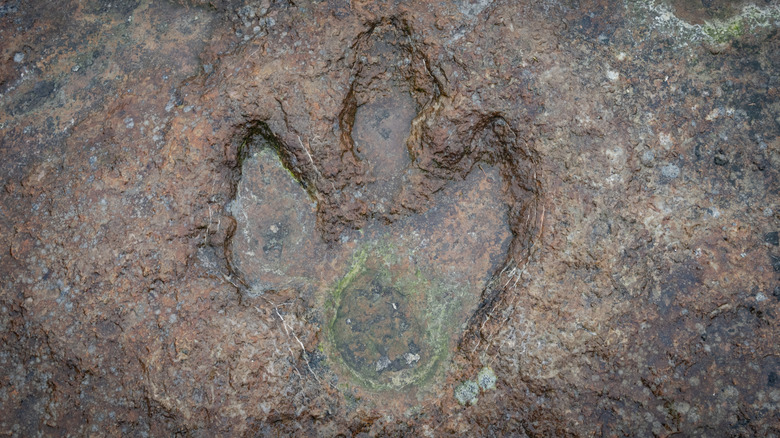Human Evolution Discovery Stuns Scientists: We Were Off By 40 Million Years
There is no greater mystery in the world than the origin of our very own lives. We typically frame the timeline of human evolution beginning with the start of the hominid line, but if we really want to understand our origins, we need to go much, much further back. There was perhaps no more impactful event in our entire evolutionary history than when animals first emerged from the waters to take the very first steps on land. Some of those steps have been preserved in fossilized footprints, and researchers just discovered a special set of tracks that could radically rewrite the story of life on Earth.
Back in 2021, a pair of amateur fossil hunters were scouring the banks of Broken River in the Australian state of Victoria when they came across a set of claw prints embedded in a rock. The fossil was passed along to researchers at Flinders University in Adelaide, and now, four years later, they have finally released their findings in a study published May 14 in the journal Nature.
The researchers identified the prints as belonging to an amniote, an animal whose offspring grow in amniotic fluid before birth. All reptiles, birds, and mammals are amniotes, meaning these prints belonged to an ancient common ancestor of ours. The footprints were dated to between 358.9 and 354 million years ago, which came as a shock considering that amniotes weren't believed to have merged until 35 to 40 million years later.
What claw prints can tell us
The tracks discovered in Victoria are now the oldest claw fossils known to humankind. The appearance of claws is a major step in the evolutionary ladder, as they represent the beginning of land-bound animals. The first tetrapods (animals with four legs) were almost certainly amphibians, but many aspects of their life, most notably amphibian reproduction, kept them bound to the water for a good deal of their time. The first animals to live exclusively on land were amniotes, and more specifically, reptiles. While reptiles and amphibians have a lot in common, claws aren't one of them, so the appearance of claws in a fossil sample is a clear indicator of a terrestrial reptile. The claw prints found in Victoria may have come from the very first of these land lizards.
The dating of the fossilized prints puts this mystery creature's lifetime right around the boundary between the Devonian and Carboniferous periods of Earth's history. The tracks that previously held the record for the oldest amniote fossil weren't made until the late Carboniferous period. The suggestion that our earliest terrestrial ancestor lived during the Devonian is truly groundbreaking. The Devonian ended with a series of mass extinction events that killed between 70% to 80% of all life on Earth. It was assumed that all Devonian animals were aquatic and that the mass extinction slowed their evolution into land-dwelling amniotes, but this discovery shatters that notion. Amniotes were alive back then, and they were able to survive something few species were able to.

